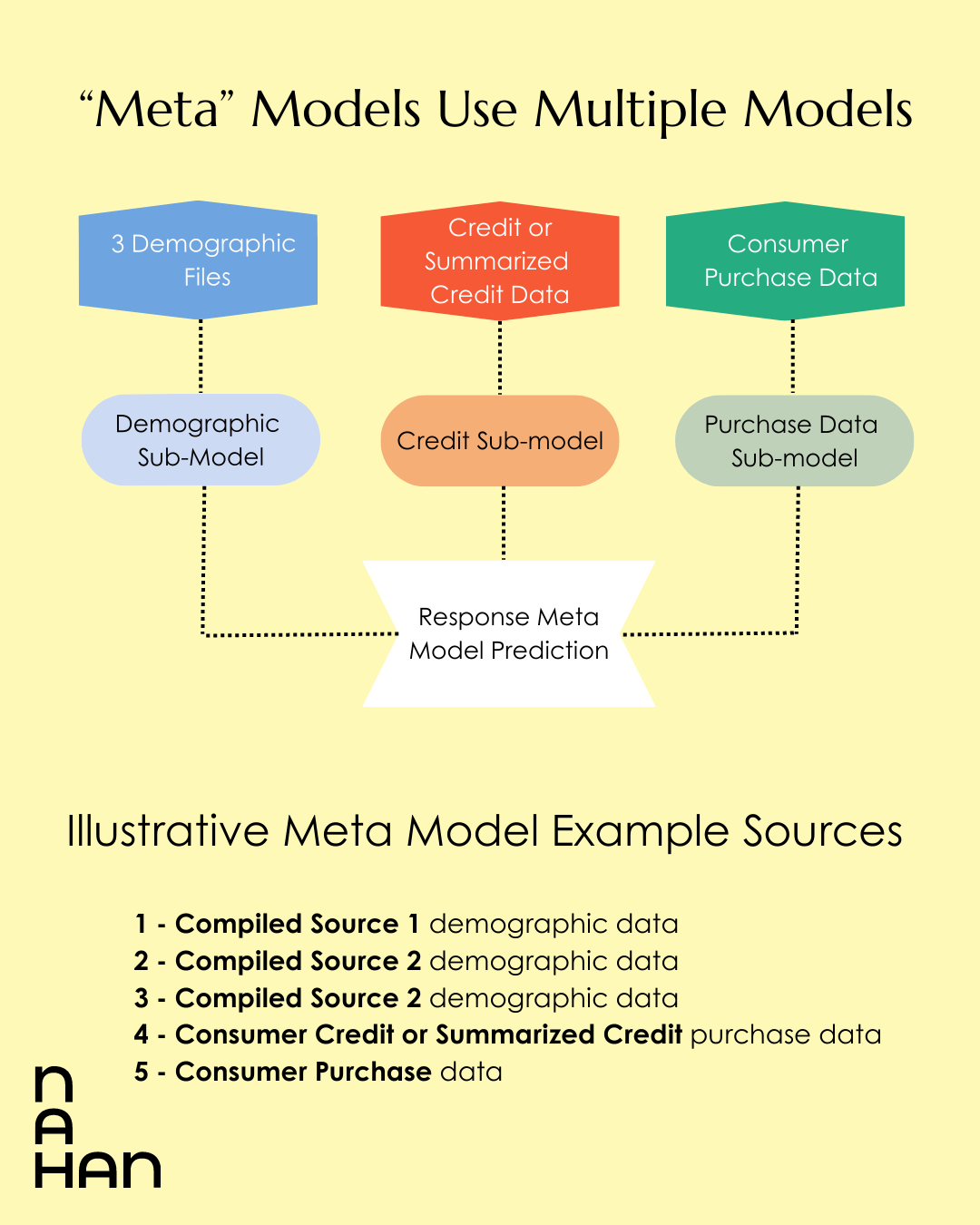Leveraging Advanced Meta Modeling for Optimizing Direct Mail Campaigns
With the costs of direct mail postage going up, it is essential that targeting must be as precise as possible. This accuracy is essential for industries like insurance, financial services, and telecom, where direct mail is an important marketing channel.
Predictive modeling has long been indispensable for these and other industries leveraging direct mail, but the question is, can we get any better with predictive analytics? We can – anywhere from 20-40% improvement in response over traditional predictive modeling.
Meta Modeling is Superior to Traditional Predictive Modeling
“Meta modeling is a game-changer in predictive analytics,” says Alan Sherman, VP of Strategy at Nahan. “We’ve moved beyond relying solely on single data provider sourced models. The era of meta-modeling is upon us, and it’s transforming how we identify our best customers.”
In our Meta models, we have access to over 20 data provider files to consider over 25,000 data attributes across credit, alt-credit, demographic, and specialty data files. Credit bureau data use is usually restricted to the financial and insurance industries, but in certain cases can be applied elsewhere where credit is being extended. But even without credit data, our Meta models are superior to models built by one data provider or analytic firms with access to one data provider’s compiled file.

Quantity, Quality, and Approach
The breadth of multi-sourced data means that there are exponentially more predictive data points that can be identified and taken advantage of. With access to multiple data sources there are also more net leads.
Multi-sourced data also means higher quality. A typical compiled file may contain up to 15-20% outdated or inaccurate data. Here, all data is linked across sources; we run independent and linked data hygiene to validate “good” data and suppress “bad” data, providing higher deliverability and thus better results.
With this method, sub-models are developed independently on the selected data sources. These sub-models roll-up to an overarching Meta model, which produces the final predictions. This approach delivers inherent advantages over typical single-source models – superior discrimination, greater predictive accuracy, more flexibility, and a faster updating process based on the feeding of most recent campaign results. Unlike most models, these never grow stale, as they are continuously updated at no additional cost. In addition, several Meta models can be built that focus on different goals, such as response, conversion, lifetime value, and then are combined for precise targeting that incorporates all three.
Backed by thousands of performance evaluations, tests, and simulations, meta-modeling provides marketers with accurate and predictable outcomes.
In addition, this approach is applied by a team of award-winning and machine-learning analytic professionals backed by a powerful infrastructure that easily processes millions of records.
The Analysis

Meta modeling begins with an analysis of client customer and promotional files. It results in the building of a Meta model with documentation, projected results and universe sizing. Strategy and target universe recommendations are made. All at no cost, with the expectation of a test to prove performance.
Conclusion
In conclusion, meta-modeling offers a powerful tool for optimizing direct mail campaigns. Its ability to integrate multiple predictive models and harness multi-sourced data provides unprecedented precision in identifying the best prospects.
“In this rapidly evolving industry,” says Sherman, “embracing advancements like meta-modeling is not just about staying competitive. It’s about shaping the future of marketing.” Businesses that adopt these sophisticated approaches can expect improved marketing outcomes and superior results.

In this white paper, we provide an insiders guide to effective direct mail testing for programs of all sizes and across industries. It doesn’t matter if you’re just getting started with testing or a seasoned pro, our guide will provide you with actionable insights you can implement today.
Learn how the four phases of the testing process work together to drive optimization.
- Research
- Pre-Testing
- Testing
- Post-Campaign Assessment
If you’re ready to test smarter and drive ROI for your program, fill out the form below for the full guide to direct mail testing today!


